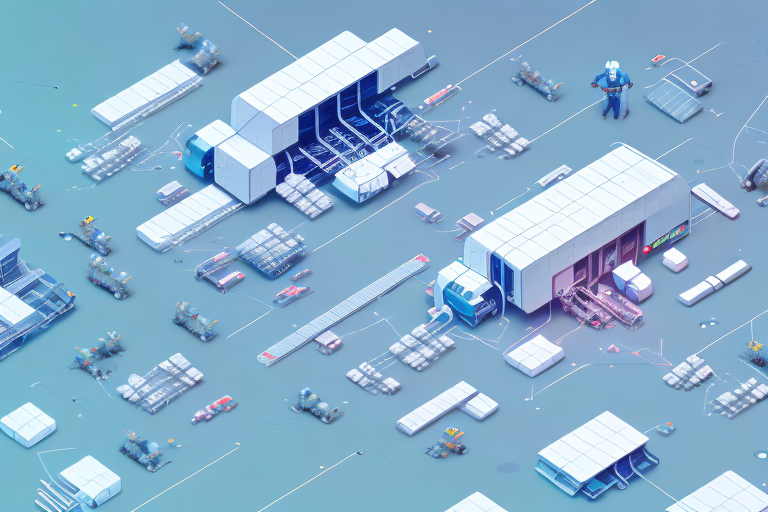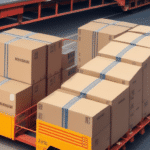The Importance of Staying Up-to-Date with Logistic Trends
The logistics industry is a dynamic and complex ecosystem that continuously adapts to technological advancements, market demands, and global challenges. For businesses to maintain a competitive edge, it is crucial to stay informed about the latest logistic trends. Being up-to-date allows companies to forecast and plan for future market changes, manage operating costs effectively, and optimize supply chain efficiency, ultimately enhancing customer satisfaction.
Staying current with logistic trends also enables businesses to anticipate and respond to competitors' actions. By adopting innovative technologies and strategies, companies can streamline operations, reduce errors, and achieve faster, more accurate deliveries. For instance, the integration of automation and artificial intelligence (AI) in logistics processes can significantly enhance operational performance and reliability.
Technological Innovations Transforming Logistics
Impact of Technology on Operations
Technology plays a pivotal role in revolutionizing logistics operations. Modern advancements such as cloud-based logistics management systems, drones, and robotics are reshaping the supply chain landscape. These technologies offer enhanced accuracy, real-time tracking, and visibility, leading to faster delivery times and reduced operational costs.
Big Data and Analytics
Big data analytics is becoming indispensable in modern logistics. By harnessing vast amounts of data from various sources, businesses can gain critical insights into their operations. Advanced analytics tools enable accurate demand forecasting, optimized routing, and improved inventory management. According to a report by McKinsey & Company, companies that effectively utilize big data can achieve up to a 20% reduction in logistics costs.
Automation and Artificial Intelligence
Automation technologies, including AI, are transforming supply chain management by automating repetitive tasks and enhancing decision-making processes. AI-driven systems can predict demand fluctuations, optimize warehouse operations, and manage fleet logistics with minimal human intervention. This not only reduces errors but also frees up human resources to focus on strategic initiatives.
E-Commerce Driven Changes in the Logistics Landscape
Adapting to E-Commerce Growth
The exponential growth of e-commerce has significantly altered the logistics landscape. With more consumers shopping online, businesses must adapt their logistics operations to meet the increasing demand for efficient, fast, and affordable delivery solutions. This shift necessitates the development of robust last-mile delivery strategies to ensure timely and reliable deliveries.
Last-Mile Delivery Solutions
Last-mile delivery is a critical component of the e-commerce logistics chain. Efficient last-mile solutions involve optimizing delivery routes, reducing delivery times, and enhancing customer satisfaction. Technologies such as real-time tracking and automated dispatch systems are essential for overcoming challenges like failed deliveries and route inefficiencies.
Managing Returns
The rise of e-commerce has also led to an increase in product returns. Effective returns management is essential to maintaining customer satisfaction and minimizing logistical challenges. Businesses must implement streamlined returns processes, including clear instructions for customers, efficient handling of returned products, and timely refunds.
Sustainable Logistics and Green Practices
Environmental Responsibility
As environmental consciousness grows among consumers, sustainability has become a top priority in logistics. Companies are increasingly adopting environmentally friendly practices to reduce their carbon footprint and promote eco-friendly operations. This includes using alternative fuels like biofuels and electric vehicles, which emit fewer pollutants and greenhouse gases.
Renewable Energy and Circular Economy
Investing in renewable energy sources, such as solar and wind power, is another way logistics companies can enhance sustainability. Additionally, adopting circular economy principles—such as reusing and recycling materials and designing recyclable packaging—helps reduce waste and improve energy efficiency.
Global Logistics: Challenges and Opportunities
Navigating Geopolitical and Economic Factors
Global logistics is influenced by a myriad of factors, including geopolitical tensions, changing trade policies, and economic fluctuations. These elements can create significant challenges for businesses, such as increased operational risks and supply chain disruptions. To navigate these complexities, companies must develop comprehensive strategies that account for regulatory variations, logistical infrastructure differences, and local market dynamics.
Environmental Impact and Sustainability
Managing the environmental impact of global transportation remains a significant challenge. Businesses must find ways to optimize transportation routes, reduce packaging waste, and utilize sustainable transportation modes to meet consumer expectations and regulatory requirements. Companies that successfully implement sustainable logistics practices can enhance their reputation and gain a competitive advantage in the global marketplace.
Optimizing Supply Chain Management
Automation in Supply Chain Operations
Automation is revolutionizing supply chain management by enhancing efficiency and accuracy. Automated systems streamline processes such as warehouse management, order dispatch, and transportation management. This reduces the likelihood of errors, speeds up operations, and lowers costs.
Inventory Management
Effective inventory management is crucial for maintaining the balance between overstocking and stockouts. Utilizing inventory management software enables businesses to optimize inventory levels, ensuring that the right amount of stock is available at the right time and place. This leads to cost savings and improves the ability to meet customer demand promptly.
Enhanced Communication and Collaboration
Improving communication between stakeholders in the supply chain is essential for reducing delays and errors. Implementing collaborative platforms facilitates real-time communication and information sharing, ensuring that all parties are aligned and can respond swiftly to any issues that arise.
The Future of Logistics: Trends and Predictions
Emerging Technologies
The future of logistics is poised to be shaped by emerging technologies such as blockchain, machine learning, and advanced robotics. These technologies promise to further enhance supply chain transparency, security, and efficiency. For example, blockchain can provide immutable records of transactions, improving trust and traceability in the supply chain.
Environmental Sustainability
Sustainability will continue to be a significant focus area, with increasing emphasis on reducing carbon emissions and adopting green logistics practices. Companies investing in sustainable technologies and practices will likely lead the market, driven by consumer demand and regulatory pressures.
Expansion into Emerging Markets
As businesses look to expand into emerging markets, they will encounter both challenges and opportunities. Understanding local regulations, consumer behavior, and logistical infrastructure is critical for successful market entry and sustainable growth in these regions.
Overcoming Common Logistics Pitfalls with Innovative Solutions
Managing Inventory Levels
One of the most common challenges in logistics is managing inventory levels to avoid overstocking and stockouts. Utilizing inventory management software helps businesses accurately forecast demand, optimize stock levels, and reduce associated costs.
Improving Communication
Poor communication between different supply chain stakeholders can lead to delays and errors. Implementing collaborative platforms that support real-time communication and data sharing can significantly enhance coordination and reduce the likelihood of misunderstandings.
Addressing Operational Disruptions
Operational disruptions, such as fluctuating fuel prices or unexpected demand changes, require agile and responsive solutions. Businesses can leverage predictive analytics and flexible logistics strategies to anticipate and mitigate the impact of such disruptions, ensuring continuity and efficiency in their operations.
Conclusion
The logistics industry is in a state of continuous evolution, driven by technological advancements, shifting market demands, and global challenges. By staying informed about the latest logistic trends and adopting innovative solutions, businesses can optimize their operations, reduce costs, and enhance customer satisfaction. Integrating technologies like automation, AI, and big data analytics, along with sustainable practices, will be crucial for future-proofing logistics operations and maintaining a competitive edge in the ever-changing business landscape.




















